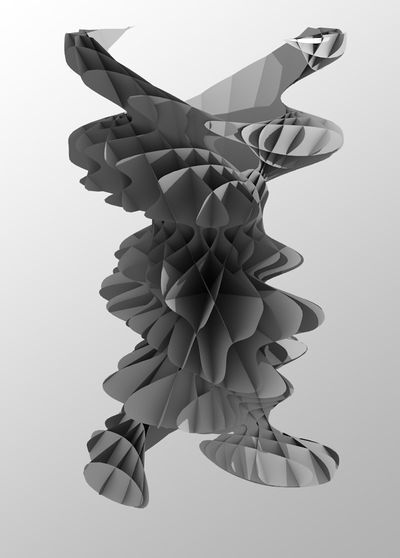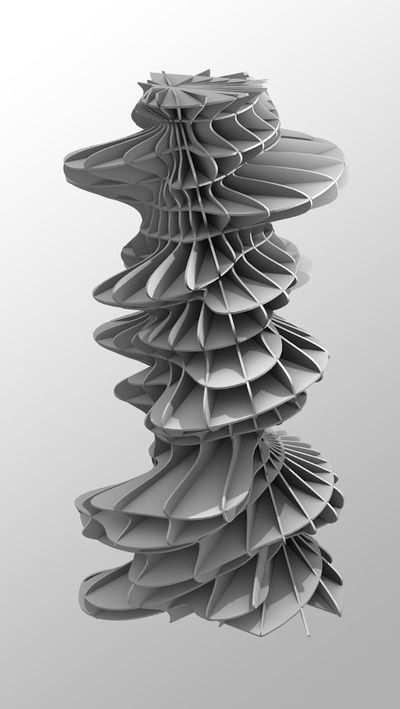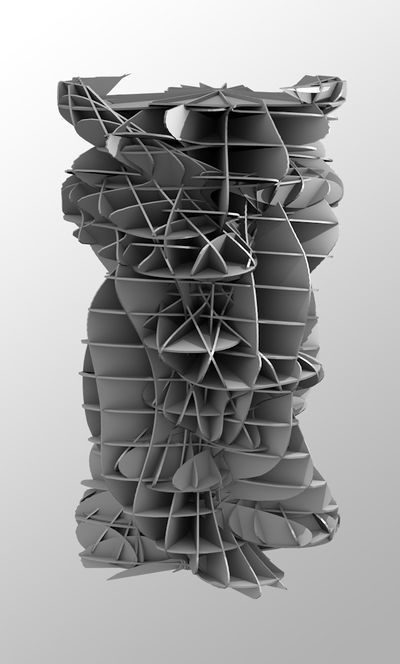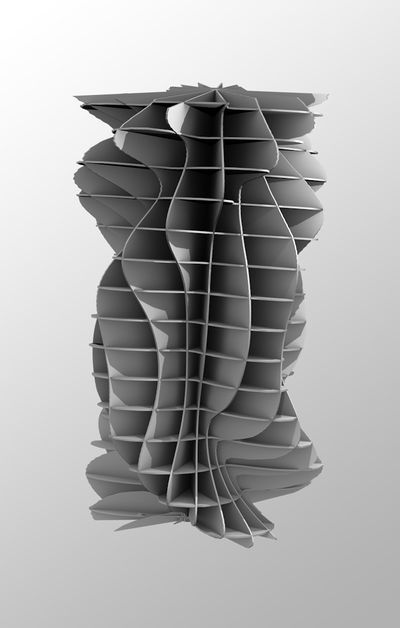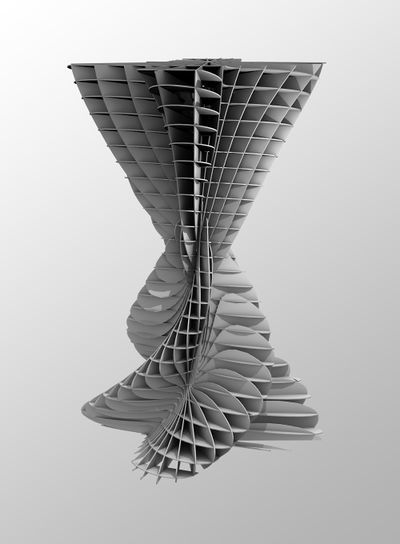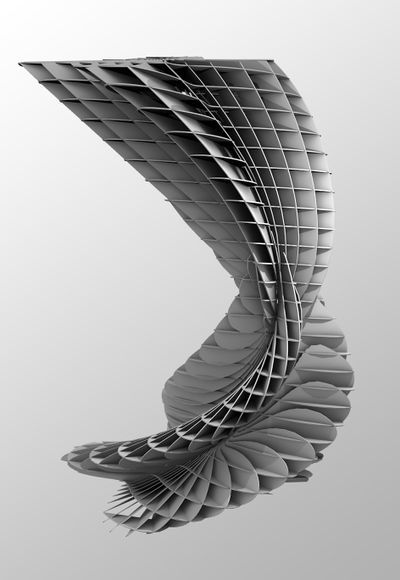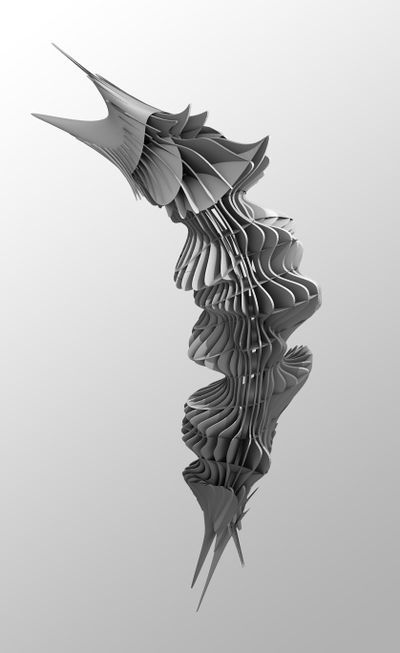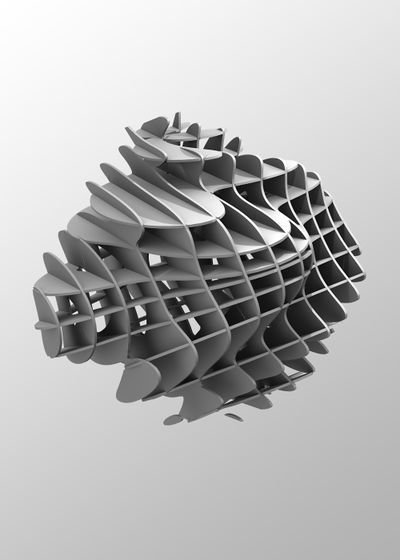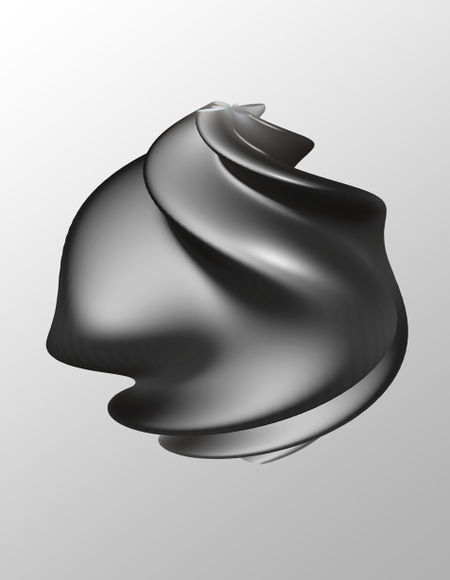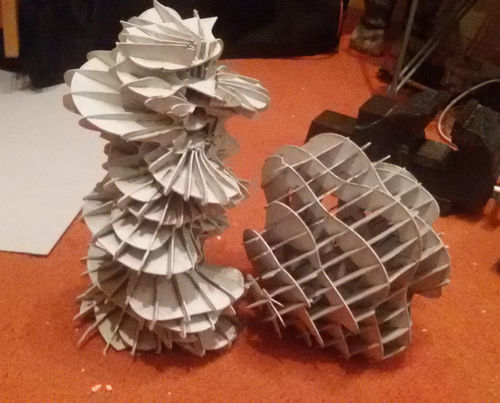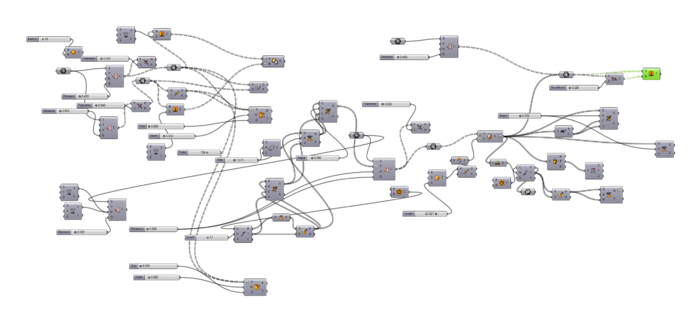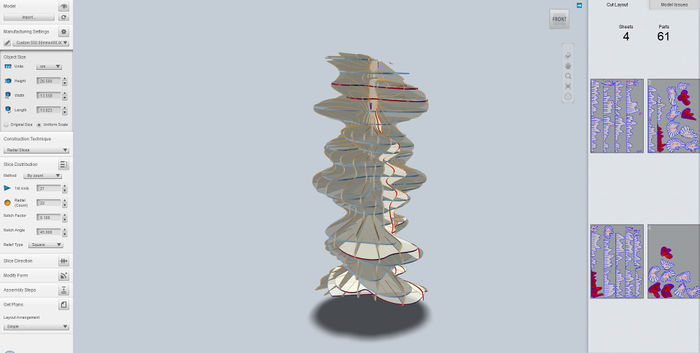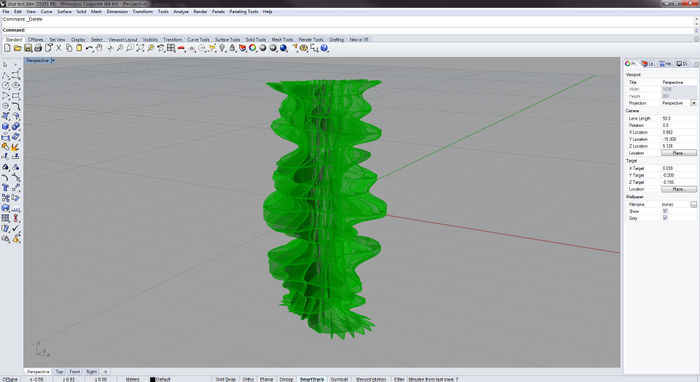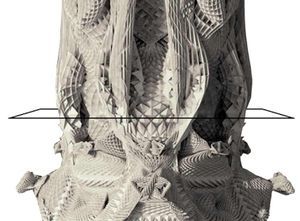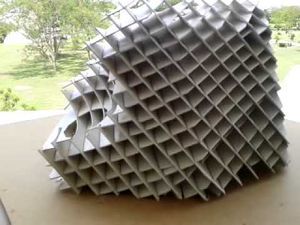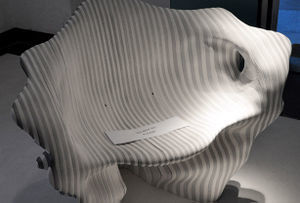User:TimDemper/fantastic forgeries resit
These are mathematical shapes, generated from formulas. Then sliced in complex ways. I have chosen these mathematical shapes as a base for the slices, because i think it's interesting how simple rules can create a complex and aesthetic shape. I have chosen to use relatively simple shapes with less detail, because the detail will be mostly lost in the slicing process. And it creates more harmonious shapes, more detail and complexity would just make the shapes more chaotic. It's interesting how there is a tension between solid and negative space. I made this intentionally more visible by increasing the ambient occlusion in the renderings. This is also very visible in the fabricated objects, the holes are very dark. I chose white as a color for the objects, because it gives the most contrast between the solid and the negative spaces. The objects also look the most harmonious and aesthetic in white.
Techniques used:
I used grasshopper to create a custom script for slicing the objects. The interesting part about this in comparison to 123d make is that you can change the direction of every slice individual, and even bend them. This creates different kind of patterns, that are sometimes more interesting than the squire ones. When using complex slices in every direction, it is very hard or impossible to create an actual object of it. Most shapes from grasshopper where to complex to fabricate with the script. And the ones that where able to fabricate weren't any more interesting than the slices from 123d catch. So I decided to make renderings of the complex ones, and make a few actual fabricated objects of simpler slices.
The grasshopper script slices the objects original objects with variable angles. Then it bend or distorts the objects. Then it creates slits for to assemble the objects. Especially the slit creation resulted in a lot of errors and strange results in the more complex slices. If i had more time i could probably solve this problem by making a better slit creation algorithm. But the more complex ones aren't necessarily more interesting so i chose to fabricate the most interesting simple ones.
Inspiratie/research
sliced sinewave/droplet pattern:
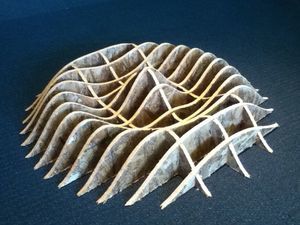
This object is entirely mathematically generated and presents a beautiful sweeping shape, as if the complex motion was captured in an instant.

"Icon" instalation. Abstract cardboard structures.
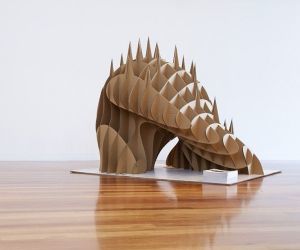
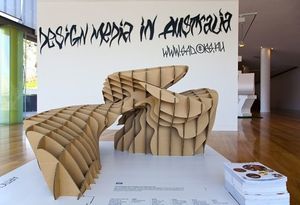
https://www.ted.com/talks/michael_hansmeyer_building_unimaginable_shapes?language=en
Structures inspired by cell division. The pillars are made out of a primitive shape, that is folded a lot of times with differed folding ratios. Then it is sliced and fabricated from cardboard.
It's interesting how these simple rules can create very complex shapes, that are almost impossible to sculpt by hand, and almost unimaginable.
